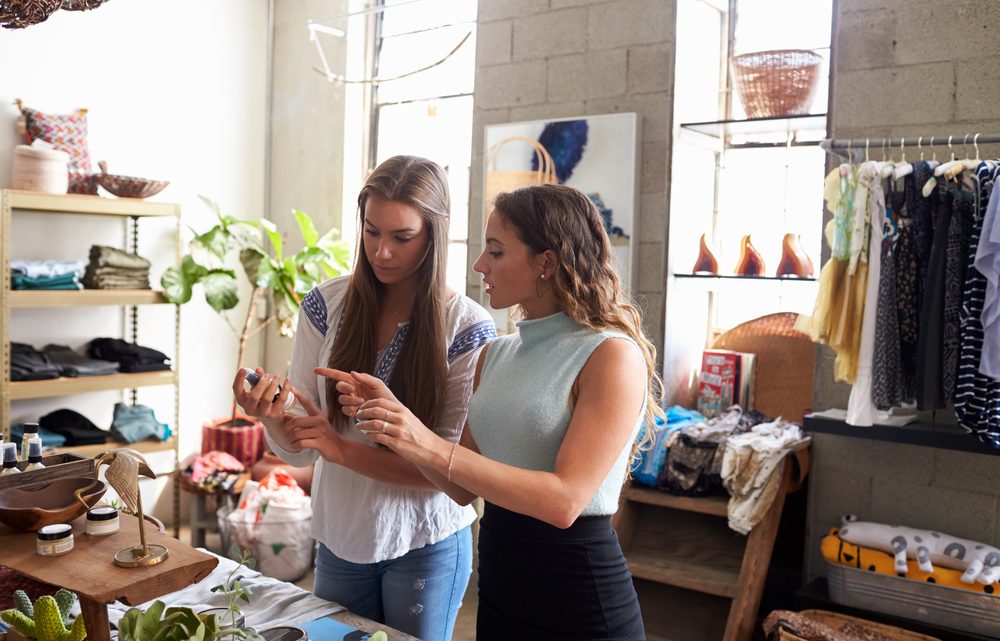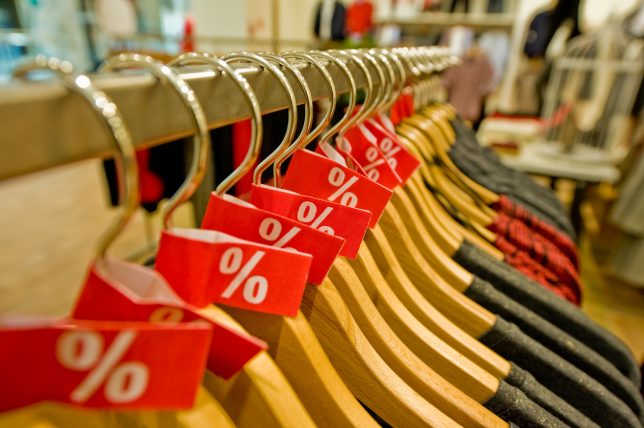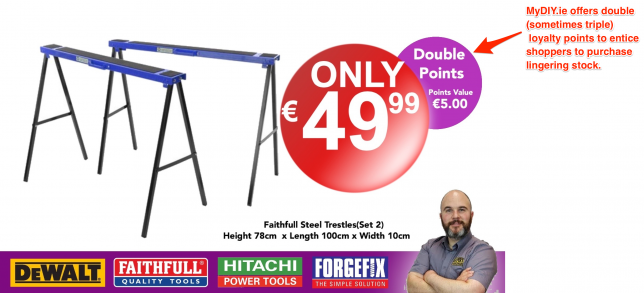Author: Cara Wood
Original Content Sourced from Vend
Marketing your retail store and driving tons of foot traffic is all well and good, but your efforts won’t amount to much if the people you’ve worked so hard to attract don’t buy much (or at all).
You should always think about how to maximise your sales and part of doing that is increasing your average transaction value. Check out the following tips for doing just that:
1. Get your salespeople to upsell and cross-sell.
Your best tool for all things sales-related will always be your salespeople. The relationships (or lack thereof) that they develop with shoppers will make or break your customers’ experiences. You need to give your salespeople the skills and motivation to upsell and cross-sell to everyone who walks through your doors.
Real quick, let me explain the difference between upselling and cross-selling.
Upselling is convincing a customer to upgrade the product they were originally planning on buying. For instance, if a customer comes in to buy the cheapest lawnmower in your store, upselling would be convincing them that buying a more expensive (but better quality) lawnmower is in their best interest.
Cross-selling is adding a separate, though typically related, product to a sale. An example of this would be if a customer goes into a store to buy a shirt and the associate convinces them to buy a pair of pants to make it an outfit.
Here’s a great video explaining upselling vs. cross-selling:
Both upselling and cross-selling utilise the same general skills from a salesperson: the ability to understand what a customer both wants and needs, and then educating them on your solutions. Ultimately, your associate’s goal shouldn’t be ‘make more money for the store,’ but rather ‘provide more value.’ That goal will give them the empathy to suggest the right products to your customers as well as creating happy and loyal customers.
In the case of the lawnmower, for instance, a sales associate may hear, “I need to get the cheapest lawnmower here. I have a huge yard and my mowers always break within a year so I can’t spend much on them.”The sales associate can step in and say, “We can totally get you that cheap lawnmower, but before you commit, can I show you this other lawnmower? It’s very hardy and comes with a 10-year warranty. It’ll cost you $150 more up front, but you’ll have it forever so it will save you a lot of frustration and money in the long run.”
Cross-selling is essentially the same. The associate just uses the cross-sell to fully solve a want or need.
You can motivate your employees to make sure they’re cross/upselling with every purchase in a number of ways.
Set unit per transaction (UPT) and dollar per transaction (DPT) goals for each of your employees.You can set these up as monthly, weekly, and even shiftly goals. UPTs obviously measures cross-selling success, while DPTs are better for measuring upselling to some degree. Most POS systems these days allow you to set and track these goals easily.
Provide your employees with extra motivation for meeting (or exceeding) these goals by giving bonuses or gifts.
You can also run contests to encourage everyone to meet a temporarily higher goal. When I worked retail, our corporate office regularly offered small reward periods for meeting our UPT goals every day for a certain amount of time. Once they offered a region-wide massive bonus to whichever store in the area exceeded their UPT goals by the most. The region-wide contest doubled our region’s average UPT.
Offer light training on what products work together and why.
A hobby shop, for instance, can provide its employees with information on which games are most likely to be bought by the same person. My store, a women’s clothing store, did this by creating a poster once a month of the “Key 10” items from that launch that formed a few must-have outfits.
2. Use merchandising to your advantage
The way you layout your merchandise in your store can have a significant effect on purchase value. It can even do some cross-selling for you.
Display impulse purchases and gift cards near the register. These items should involve 1-3 things: urgency, value, and/or excitement. This is time-honored technique is used by most stores, but Sephora has this mastered.
Sephora has created a clear place to queue for the register by lining a zig-zag with all their travel size products, offering you the chance to peruse while you wait to be checked out. After picking out your full-size items in the store, it’s hard to resist purchasing a “cheaper” small size of an item you were looking at earlier but couldn’t afford. This technique has been contributing to Sephora’s massive in-store purchase rate growth in recent years, even as the retail industry’s in-store purchase rate has declined.
Looking to sell more gift cards at checkout? Get yourself a nice gift card holder that you can place near the checkout counter. There are plenty of ready-to-use gift card racks, shelves, and holders that you can use in your store, and prices range from around $3 to $35.
Pair items that sell well together throughout the store.
Grocery stores, in particular, have gotten really good at this kind of displaying. For instance, Buehler’s Fresh Foods moved their cherry pitters next to their cherries and sold out of the cherry pitters at all of their locations.
Tesco got even more creative after their realised that a large portion of their customer buying diapers were fathers. They began displaying beer and other snacks typically bought by male customers in the same aisle and saw an immediate increase in sales.
Lower the amount of merchandise on the floor to a showrooming level.
This creates an atmosphere where customers have to talk to salespeople, thus ensuring a great opportunity to upsell or cross-sell.
Modcloth’s Austin, TX, store is one to imitate here. Every item of clothing is displayed in only one size on their floor. Customers are encouraged to walk the floor, picking which items they’d like to try on.
Modcloth’s stylists/salespeople then disappear into the stockroom to pull these items. When they return, they don’t just bring the original items. Rather, they come back with fully styled looks for each item for the customer to try on. This process feels luxurious for the customer, but it’s ultimately a brilliant way to get customers to purchase more items than they planned on. (And trust me, it works. I bought so much more than I thought I would.)
3. Use the right promotions to increase purchase values temporarily.
For a temporary increase in purchase values, you can always implement a few different tried-and-true promotions.
- A certain percentage or amount off once the customer reaches a chosen threshold. Think “$25 off of $100.”
- Buy one get one promos are intended to raise purchase values because in order to take advantage of the sale, the customer has to buy at least two things.
- Offer bundle discounts. These can usually be offered all year round, as well. For items that a customer would be more likely to buy in bulk if it were cheaper, offer a discount for purchasing more at once. You can even stagger this discount: 10% off for 2, 15% off for 3, etc.
4. Beef up your loyalty program.
Loyalty programs are great for helping customers stay loyal, that’s for sure. But did you know you can also use them to increase purchase values?
Starbucks has been pioneering this concept within their loyalty program for the past few years. Within their loyalty program, you earn stars (points) for every dollar you spend. With 125 stars, you get a free drink.
In order to promote certain items, higher purchase values, and even different purchase times, though, Starbucks runs weekly “challenges.” These challenges typically consist of purchasing a certain number of days in a row or purchasing a certain number of specific items. Once you complete the challenge, you get bonus stars.
A few times a year, they also run major games like Star Bingo and Starbucks for Life. These games are essentially mashups of all their weekly contests in one. In Starbucks for Life, for instance, you can get game pieces for such activities as spending more than $12 in one purchase and visiting 5 different Starbucks locations. The weekly contests, by the way, are personalised for each customer, so that they’re not trying to encourage you to raise purchase values with something you will never buy.
But don’t just take my word on how awesome this program is at increasing purchase values. The program actually helped Starbucks increase their total revenue to a staggering $2.65B.
Of course, Starbucks is a massive corporate outfit with the resources to engineer their own loyalty program.
Small stores should be able to set up a loyalty program through their POS (good news for Vend customers — they offer that feature!). Set up your points system to encourage a higher purchase value, rather than just purchases.
Another cool loyalty trick? Offering more points for purchasing products that you really want to move. Home improvement store MyDIY.ie does this really well.
When it comes to items they want to get rid of or liquidate, the store offers double or triple the amount of loyalty. They mark those products clearly on the shelves, so shoppers know that they get additional loyalty dollars for those specific items. This enables them to sell those slow-moving products without implementing steep discounts. And since shoppers earn loyalty dollars, those customers are encouraged to come back and buy even more.
5. Offer free shipping on unavailable items.
A very simple way to increase a customer’s purchase value is to offer free shipping on items that aren’t available in your store, so you won’t lose out on a purchase or part of a purchase just because you can’t physically hand the customer an item.
Many major stores do this now. DSW, for instance, can order a pair of shoes for a customer if the store is out of their size and have it shipped right to their door. In my personal experience as a customer, this policy is very dangerous for my wallet.
6. Be flexible with payments.
The budget of your customers directly affects the size of their transactions. That’s why if you can find a way to make shopping at your store more “budget-friendly,” you could potentially encourage them to spend more.
One way to do this if offer flexible payment options such as lay-by or installments. If you’re not a fan of not getting paid in full, consider using a solution like Afterpay, a “buy now pay later” solution that allows you to receive payment for purchased items upfront while letting your customers pay in four fortnightly installments. It’s interest-free and when paid on time there are no extra costs for your customers.
Billy Parry, Head of Sales – SMB at Afterpay, says that “retailers that have Afterpay in-store see higher average order values than what they see with Afterpay online. Giving your customers the option to pay for their purchase over time means they can buy more of what they want while being able to budget.”
Bonus: Use your receipts
While this tip won’t actually increase the initial purchase value of a customer, it will increase the overall amount spent by a customer within a 48-hour window.
Email receipts are high-value real estate that most retailers don’t even realise that they have. flexReceipts, a dynamic eReceipt company, has found that digital receipts have an 80% open rate and that 75% of people who click on something in a digital receipt will make another purchase within 48 hours.
To take advantage of this you can include (preferably dynamic) CTAs in digital receipts for things like product recommendations (keep cross-selling even after they leave the store) or bounce-back coupons.
Conclusion
Increasing purchase values may take a little work, but once you get the ball rolling, you’ll start seeing results. Hopefully, this post brings you closer to doing just that.
Good luck!











